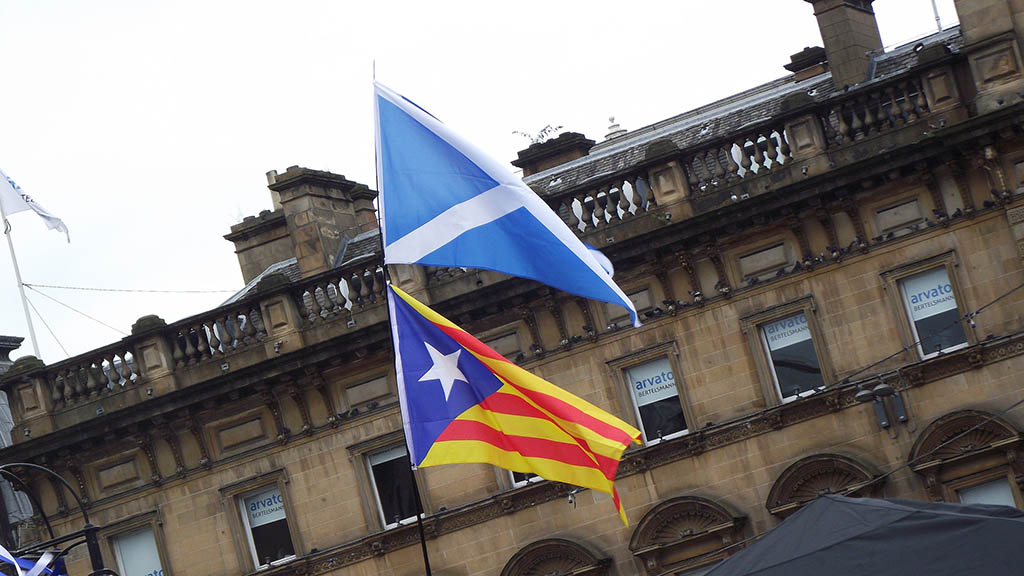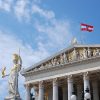
Catalonia and Scotland share grievances that led them to hold referendums on independence, in the first case an illegal vote in 2017, in defiance of the Spanish Constitution, and the second a legal one in 2014 agreed with the UK government as Britain does not have a codified constitution.
John Elliott, the distinguished British historian, has done a great service in Scots & Catalans: Union & Disunion, published this month, by examining in an even-handed way the political, social, cultural and emotional factors over the last 500 years that divide Scots and Catalans from the larger nations to which they are joined.
The Catalan and Scottish experiences have similarities, but this does not mean they can be bracketed together, as Catalan secessionists would have it, in order to justify a Scotland-style referendum.
Catalonia was the subject of Elliott’s first book, The Revolt of the Catalans, published in 1963, which grew out of his doctoral dissertation on the origins of the Catalan rebellion of 1640 against Madrid. While researching in Barcelona, a policeman admonished him for speaking in Catalan instead of Castilian, ‘the language of the empire’ (la lengua del imperio).
Royal marriages in both Scotland and Catalonia produced composite monarchies that brought about union with their more powerful neighbours. In 1469 Ferdinand, heir to the throne of Aragon, married Isabella, heiress to the Crown of Castile and they later became joint sovereigns of Castile and Aragon, and rulers of the country that came increasingly to be known as ‘Spain.’ In 1503, Margaret Tudor, the daughter of Henry VII of England, married James IV of Scotland. In 1707, the Anglo-Scottish Union incorporated Scotland into the larger polity of ‘Great Britain’, and the Nueva Planta of 1707-16 incorporated the Crown of Aragon into ‘Spain’.
While the union of England and Scotland was one between two sovereign kingdoms with the same queen, in Spain, the Crown of Aragon was subjected to a settlement imposed by a victorious monarch, following the 1701-13 War of Spanish Succession which pitted the Habsburg Archduke Charles of Austria against the Bourbon Philip V in a contest for the Spanish crown won by Philip.
Catalonia lost the form of representation it had possessed for centuries, while Scotland, in contrast, though losing it own parliament (restored in 1999 with a building designed by the Catalan architect Enric Miralles) became part of a parliamentary monarchy based on the principle of consent.
Unlike Scotland, which lost the last vestiges of its sovereign statehood in 1707, Catalonia had never been an independent sovereign state in any modern definition of the term (a hotly disputed issue in the pro-independence camp). Both Catalonia and Scotland have foundation myths that helped shape the political agenda of later generations. In Catalonia’s case, secessionists drew on what Elliott calls ‘the distorted history of Catalonia as a once independent state that had been deprived of its liberties and had been consistently victimized and oppressed by successive Spanish regimes.’
The centuries-old question of the relationship between the central government in Madrid and the different regions, particularly the ‘historic’ ones of Catalonia, the Basque Country and Galicia, became a pressing one after Franco died in 1975 and Spain moved to democracy.
The 1978 Constitution sought to strike a careful balance between national unity and national diversity, stipulating ‘the indissoluble unity of the Spanish Nation, the common and indivisible patria of all Spaniards’, while guaranteeing ‘the right of autonomy for all the nationalities and regions that integrate it and the solidarity between them all.’ The term ‘nation’ is only applied to Spain.
The answer was ‘coffee for all’ and the creation of 17 autonomous communities. Catalonia’s 1979 statute of autonomy recognised Catalonia as a nationality, gave the Catalan language an official status equal to Castilian and granted more powers than its 1932 statute before the Civil War. It transferred 89 competencies to Catalonia –more than to any other autonomous community including the Basque Country and Navarre, though they, unlike Catalonia, have fiscal autonomy, in recognition of ‘historic’ rights, but which makes the system asymmetric.
Realising that language is the core of national identity, Jordi Pujol, the Catalan premier from 1980 to 2003, set about turning bilingual Catalonia into a predominantly Catalan-speaking territory, through education policies, a TV channel, cultural institutions and public relations. The equivalent did not happen in Scotland.
Also, the Catalan history taught in schools is disconnected from that of Spain, which is not the case in Scotland as regards its history and connection to England. Even the weather forecasts on TV3 do not include the Iberian Peninsula as a whole. Madrid weather is listed along with that of other European capitals.
The fact that over 2 million Catalans (more than 40% of the electorate) voted in the illegal 2017 referendum for an independent state testified to the success of the Catalanization strategy and the failure of Madrid to effectively rebut the secessionists’ propaganda campaign. It missed an opportunity to produce what Elliott calls a ‘Spanish national narrative that would avoid the crude centralism of earlier times and instead point to the success of post-1978 Spain’.
‘Better Together’, the principal campaign for a ‘No’ vote in the 2014 Scotland independence referendum, was demonstrably effective.
Elliott assigns the prime responsibility for the current, tragic impasse to that part of the Catalan establishment which lives in a ‘fantasy world of its own’. He ends his book by calling for the proponents of independence to bear in mind the maxim of Thomas Jefferson, who wrote that ‘governments long established should not be changed for light and transient causes’, and warns that ‘whenever dialogue ceases, one more obstacle on the road to independence is removed, and secession comes closer to being the final response.’
Catalans have a reputation for their seny (common sense), just as Scots are noted for their prudence, but they are also known for their rauxa (the abandonment of reason) when gripped by a mass illusion, such as the secessionists’ belief that Catalonia can be independent and automatically stay in the EU and the euro zone, even though Brussels has repeatedly said it would have to apply to join both clubs.
A lot of seny will be required in the coming months as the new Socialist central government and the Catalan government seek to find ways out of the impasse.


